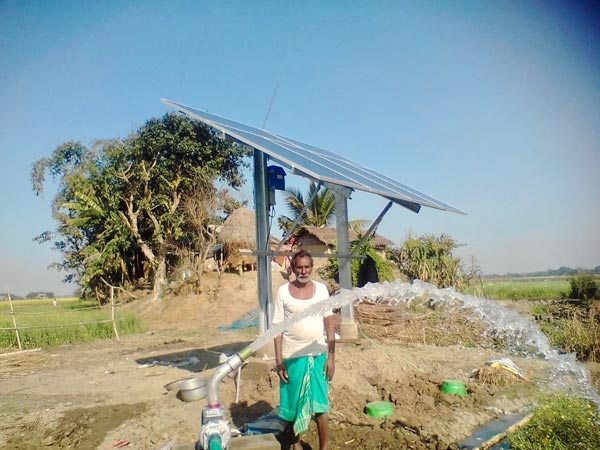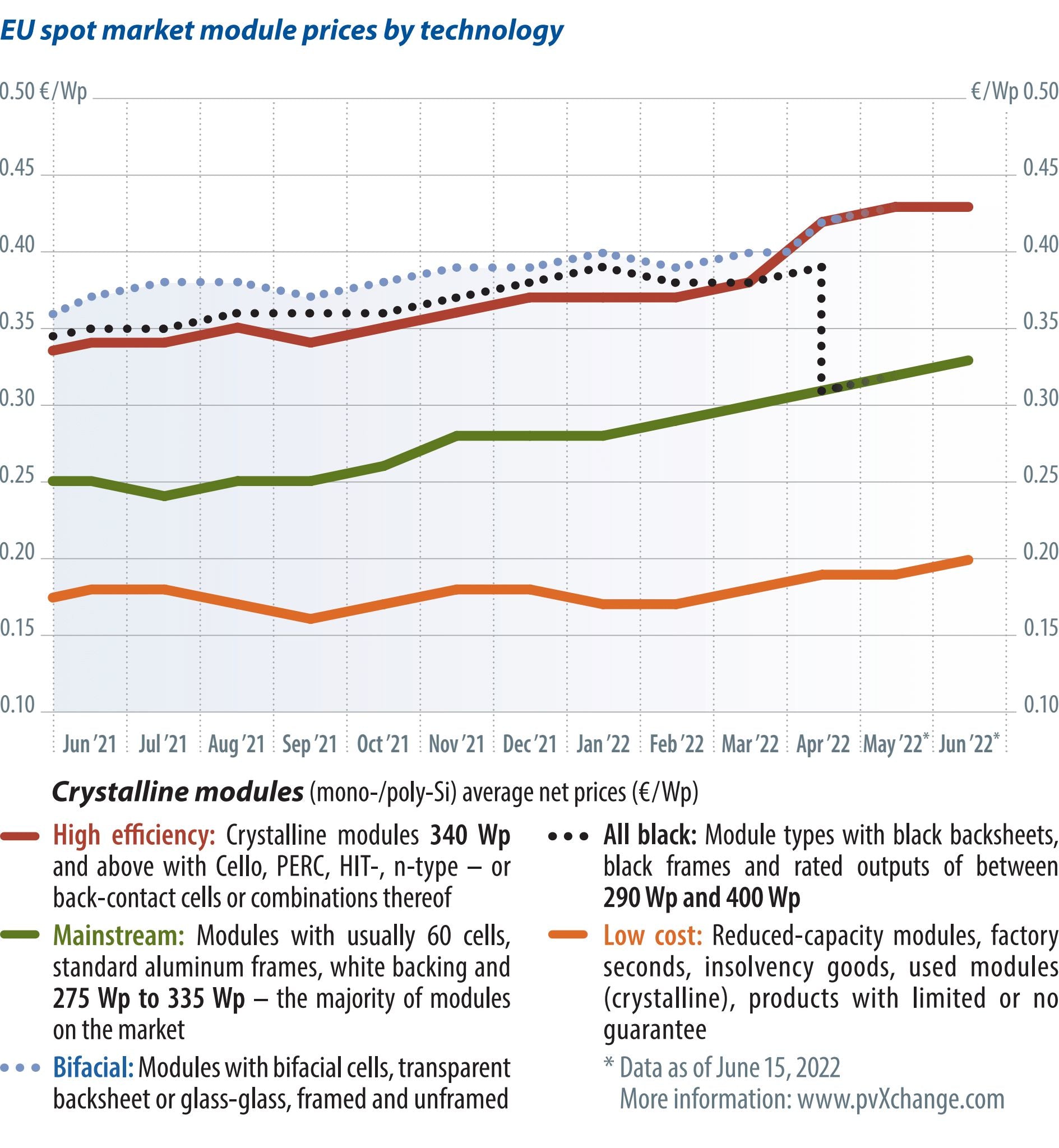https://www.pv-magazine.com/2022/08/06/the-weekend-read-how-does-the-eu-taxonomy-set-criteria-for-technologies-to-be-labeled-green-and-provide-investors-with-a-classification-system/
The weekend read: How does the EU taxonomy set criteria for technologies to be labeled green and provide investors with a classification system?

The taxonomy will have a profound impact on the level of green investments in the future, including renewables, batteries, and hydrogen. The regulation should help developers of renewable technologies attract funding and direct capital flows towards green assets.
Image: Solaria Energia
From pv magazine 07/2022
Outlining its Taxonomy Regulation, the European Commision (EC) states that “by clearly defining what is green, the EU Taxonomy seeks to incentivize and encourage companies to launch new projects, or upgrade existing ones, to meet these criteria.” It adds that the goal is to prevent greenwashing and help investors identify economic activities in line with environmental and climate objectives.
Due to their low lifecycle emissions, wind and solar projects are generally taxonomy compliant. The lifecycle emissions of solar is in the range of 20 grams to 50 grams of CO2/kWh, according to the International Energy Agency (IEA). That is well below the threshold of 100 grams of CO2/kWh in the Taxonomy’s First Delegated Act for other technologies such as geothermal, hydropower, and bioenergy.
Green finance
While Covid-19 continues to affect us, the world is facing a new crisis: The Ukrainian-Russian conflict. And let us not forget the climate crisis is also deepening. How can we address these global threats? Arguably, the renewable energy industry is one of the most effective keys – not least in terms of redirecting investment towards a more positive future. Thus, this quarter, the UP Initiative focuses on sustainable finance and looks at what needs to be done to achieve positive progress. Read more
Among criteria set for solar and wind are, in the context of the circular economy, that investors should make sure “the activity assesses availability of and, where feasible, uses equipment and components of high durability and recyclability and that are easy to dismantle and refurbish.”
Financial market participants can, if they wish, use the EU Taxonomy to design credible green financial products. But the taxonomy is not a binding regulation as such and is not enforced upon companies and investors. There is, in the words of the EC, no obligation for companies to be taxonomy-aligned and investors are free to choose what to invest in. Moreover, the taxonomy will constantly be evolving as new technologies develop and the regulation will be subject to frequent reviews and updates, according to the commission.
Capital flows
Rosa Tarragó, vice president investment strategist at Allianz Global Investors, says the taxonomy is basically an annex to the Sustainable Finance Disclosure Regulation (SFDR), which went into effect in March 2021. The SFDR obliges asset managers to make disclosures in terms of the environmental footprint of their investments.
Tarragó notes that Article 9 funds, or “Dark Green Funds” under SFDR, are defined as “a fund that has sustainable investment or a reduction in carbon emissions as its objective.” They have additional reporting requirements and may have to track an EU Climate Transition Benchmark or an EU Paris-aligned Benchmark. From August, new rules under the revised Markets in Financial Instruments Directive (MiFID 2) mean asset managers must better understand their clients’ sustainability preferences, she says.
“There has to be a clear match between what the asset manager offers and what the client wants. This is a challenge. You cannot offer alternatives. If the client says they want a taxonomy compliant product you cannot sell an alternative to that. But there is a shortage of such products because the taxonomy regulation is not old,” says Tarragó.
Controversial
On July 6, in a plenary vote, the European Parliament (EP) did not reject the EC’s proposal to include fossil gas and nuclear power under the taxonomy. Although a majority of Members of European Parliament (MEPs) voted against their inclusion, an absolute majority of 353 MEPs was needed to block the proposal, but the EP came up 75 votes short.
Popular content
The so-called Taxonomy Complimentary Climate Delegated Act (CDA), which stipulates that nuclear power and fossil gas can be labeled green investments, is expected to come into force on Jan. 1, 2023. Ministers in the Council of the EU, representing the member states, have until July 11 to block the dossier, but this is not expected to happen.
The inclusion of gas and nuclear power sparked outcry among environmental groups. In a global context, China’s Green Bond Endorsed Project Catalogue, its equivalent to the Taxonomy, excludes fossil gas. South Korea’s K-Taxonomy regulation includes gas but not nuclear power.
Under the CDA, investment in new gas-fired power plants is subject to a number of restrictions such as emissions limits and an obligation to switch to clean fuels by 2035. It will be unlikely that new CCGT gas plants could adhere to the emissions limits without expensive carbon abatement such as carbon capture and storage (CCS) or blending with hydrogen.
Yet many see the inclusion of fossil gas as damaging for the EU’s credibility in terms of climate policy and it may weaken its negotiating hand ahead of November’s COP27 climate summit in Egypt.
Rising emissions
With Europe increasingly turning to coal to keep the lights on, CO2 emissions are on the rise. According to Eurostat estimates, emissions from energy use grew in 2021 in almost all EU member states. The increase was mainly due to the rising use of solid fossil fuels, or coal, which contributed to over 50% of the increase, Eurostat said. In the EU as a whole, emissions from fossil fuel combustion increased by 6.3% in 2021 compared with the previous year.
The increasing reliance on coal in power generation continued in the first half of 2022 with some countries, including Germany, even planning to restart mothballed plants, and delaying planned closures. The good news is, however, that the return of coal is expected to be a short-term measure to combat power and gas shortages and that the transition to a cleaner energy system seems irreversible.
“Whereas additional coal-fired electricity generation will increase carbon intensity in the short term, this will likely only be temporary and not compromise the ESG targets that the German utilities have over the medium term,” Knut Slatten, vice president and senior credit officer at Moody’s, tells pv magazine. “In a bid to reduce its dependency on Russian gas, Germany will accelerate its focus on renewables development. Its program is ambitious, and Germany has not abandoned its target of exiting coal fired generation by 2030,” he says.
This content is protected by copyright and may not be reused. If you want to cooperate with us and would like to reuse some of our content, please contact: editors@pv-magazine.com.



